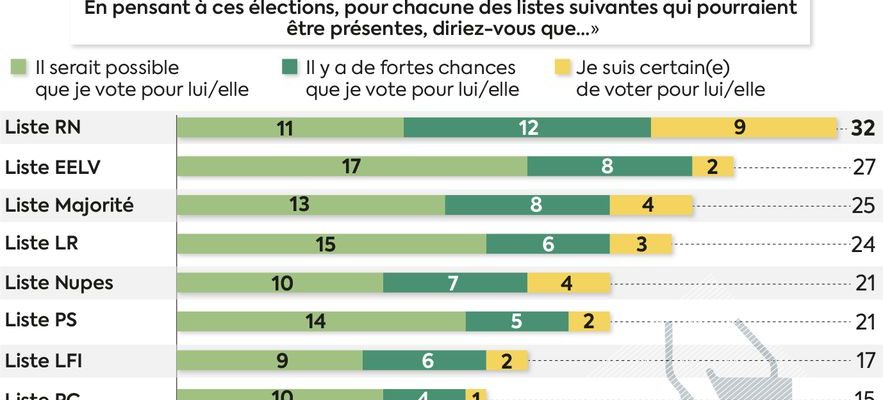On June 9, 2024, the European elections will be held. First electoral meeting since the legislative elections, this election is still very distant in the eyes of the French. A recent Eurobarometer survey carried out by Kantar Public for the European Parliament thus shows that France ranks last among the 27 EU countries as regards knowledge by the population of the date of this election: only 20% of French people know that they will take place in 2024, when the European average is 45%.
In this context, the first voting intention surveys published recently, if they offer – as the pollsters like to say – a “snapshot at the moment you” of the balance of political forces, take little account of the uncertainties and hesitations of the voters or quite simply of their remoteness vis-à-vis this election. In order to better understand this reality, we have adopted at Kantar Public a different approach through the analysis of “electoral potential”. Contrary to a voting intention where future voters are asked to “choose” one list and only one, this is about asking them for each list whether or not they plan to vote for her. Voters can thus express their hesitation between several lists. This makes it possible to assess for each one its electoral potential, beyond its base, but also its limits, taking into account the proportion of voters who would in no case consider voting for it.
One year before the election, what does the analysis of these potentials tell us? First, the RN list clearly tops the voting probabilities, with 32% of French people saying they can vote for it. It can rely both on a hard core of voters (9% of voters already say they are certain to vote for it). It is also notable that its level of rejection (those who declare that they would never vote for this list) is quite close to that of the other lists, and lower than those observed for the lists of La France insoumise, Nupes or Reconquest. In 2019, the RN list came first in the European ballot, but by little: with 23% of the vote, it was less than one point ahead of the Renaissance list led by Nathalie Loiseau.
Europeans: the hopes of the right, the doubts of the left.
© / Art Press
The fragile alliance of Nupes
For 2024, the potential of the majority list is to date significantly lower than that of the RN, with 25% of French people. Above all, it is neck and neck with the LR list, whose potential stands at 24%, well above the 8% obtained by the list led by François-Xavier Bellamy in 2019. The European ballot could therefore be a real opportunity for the right-wing party, and competition promises to be tough with the majority list, whose electoral sociology is relatively close.
On the left, the analysis of the potentials reveals that, on a strictly electoral level, neither the PS nor a fortiori EELV have any interest in a common list under the Nupes banner. The electoral potential of a PS list alone is indeed 21%, at the same level as that of a Nupes list, while that of an EELV list climbs to 27%. In addition, a significant proportion of potential voters on the EELV and PS lists (around 40%) do not plan to vote for a Nupes list. The Nupes seems to have lost both its functional usefulness (very useful in the two-round ballot of the legislative elections, the union is of little interest in a proportional election) and its attractiveness. There remains a symbolic utility, the possibility of coming out on top, but it is not certain that it has so much importance in the eyes of the French, and it does not make sense with regard to the purpose of the ballot, the composition of the European Parliament.
* Guillaume Caline is Director of Public Issues and Opinion at Kantar Public.
